
Kurze is one of the most popular meals in Dagestan. They are distinguished from other dumplings by their unique form and a special method of preparation. Kurze is made in the form of a teardrop, with a rounded end on one side and a sharp end on the other. The stitch in the form of a knitting pattern is on top.
It’s believed that this seam is what gave the dish its name. 'Kurze' comes from the word 'gurza', which is the name of a snake. The pattern on top of the dumplings resembles the way a snake moves. There’s a tradition among Dagestani mothers-in-law to test a future bride by their ability to mold a kurze. If a girl can dexterously and accurately make and maintain a kurze stitch, then it’s believed that she’ll be a good housewife.
Kurze’s shape is not the only thing that differentiates it from other meat dumplings. One should also add milk whey or tomatoes to the beef or lamb minced meat. During this season of ripe sweet tomatoes, I decided to make kurze with the second kind of filling.
Some of the onions are fried in butter and stewed with fresh tomatoes and spices. The raw onions, fresh herbs and garlic are added later. This combination gives a unique flavor and is delicate but spicy at the same time.
Despite the fact that the filling is very juicy, kurze are often prepared with special homemade sauces. To make the sour cream sauce, mix garlic and finely chopped herbs. For tomato sauce, grate tomatoes, add spices and stew for a few minutes with oil. However, with simple sour cream and fresh herbs hot kurze will also be delicious.
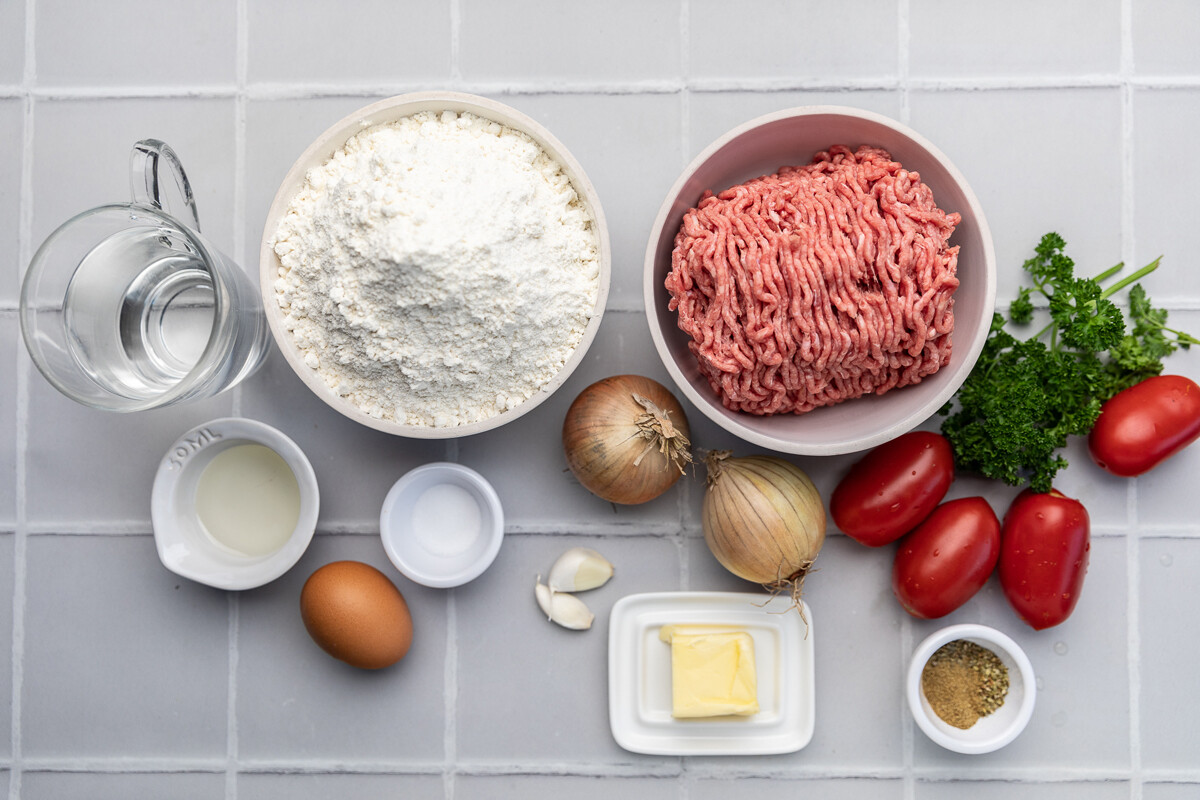
Dough:
Filling:
1. Place water, oil, and egg in a food processor, and add flour and salt. Knead into a stiff dough. It took me about 10-15 minutes.

2. The dough will become more elastic. Place in a bag for 30-60 minutes.
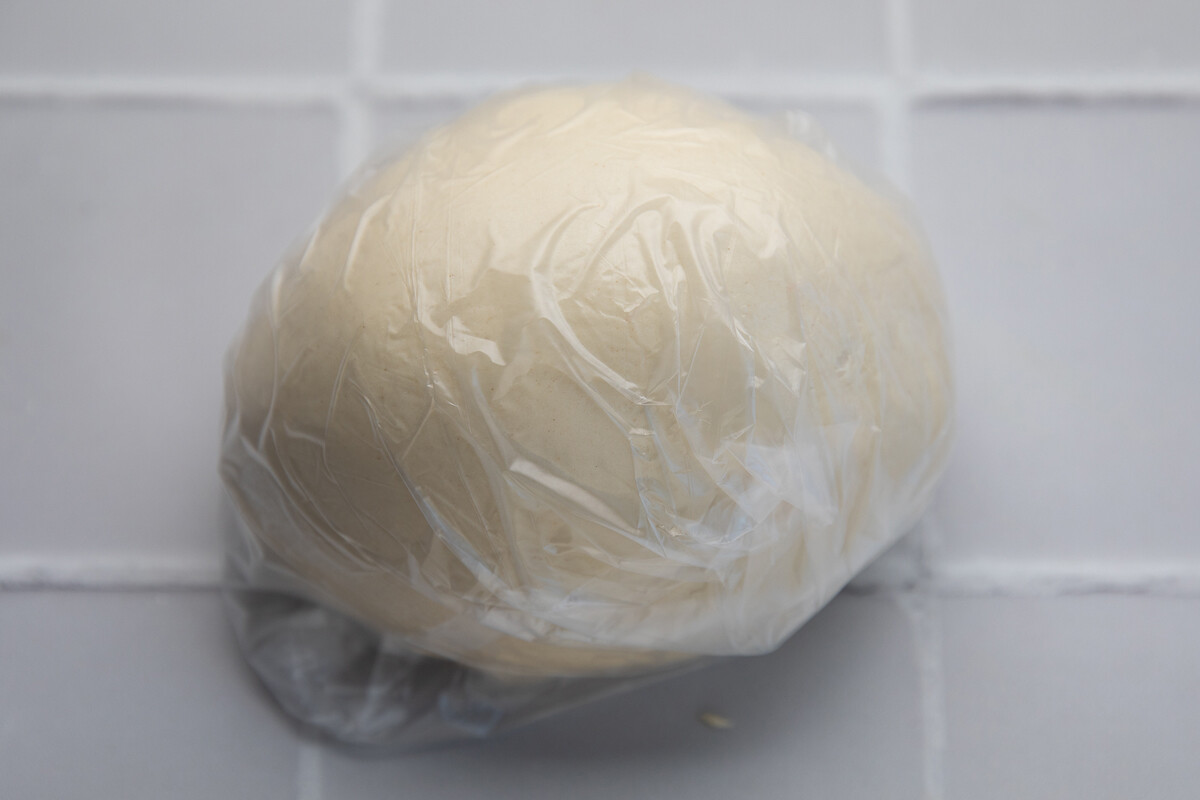
3. Chop one onion as finely as possible. Fry it in butter with sunflower oil until golden. Finely chop or grate ripe tomatoes and add them to the onions. Add the spices and salt, and stew for about 20 minutes, stirring and making sure that the sauce doesn't stick.
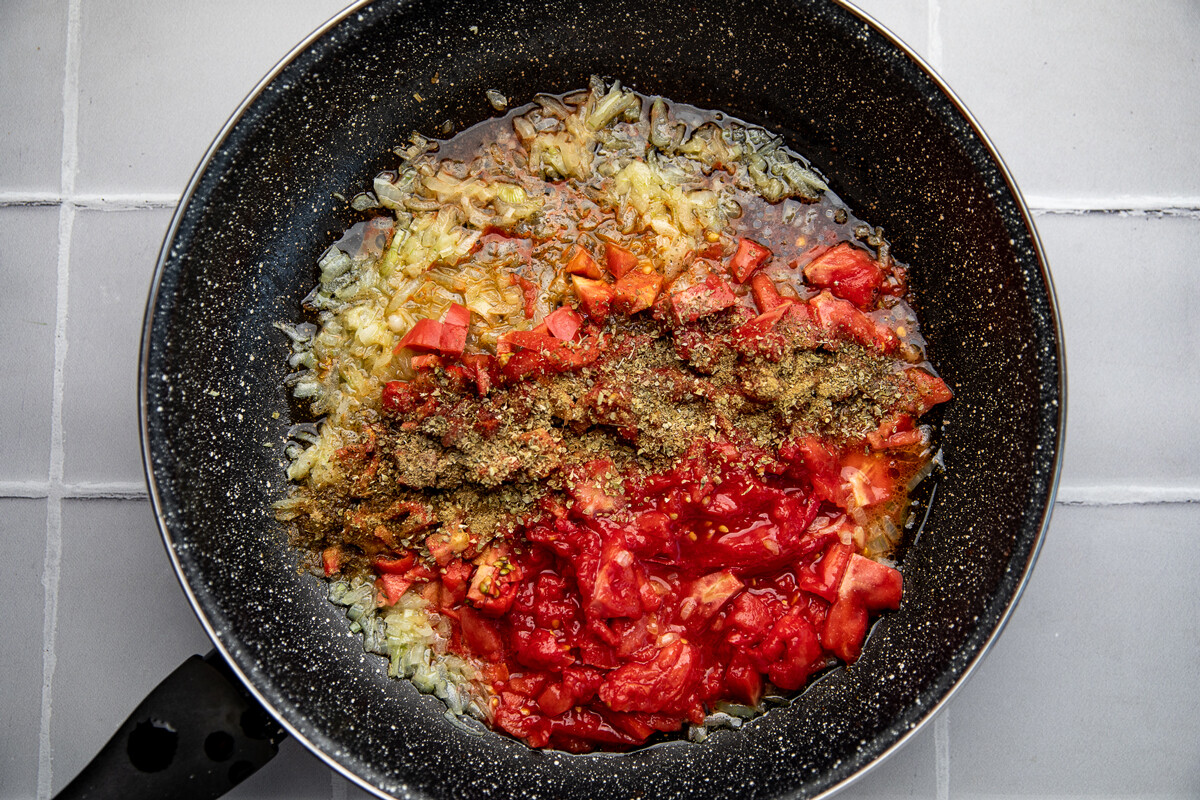
4. Let the tomato sauce cool.
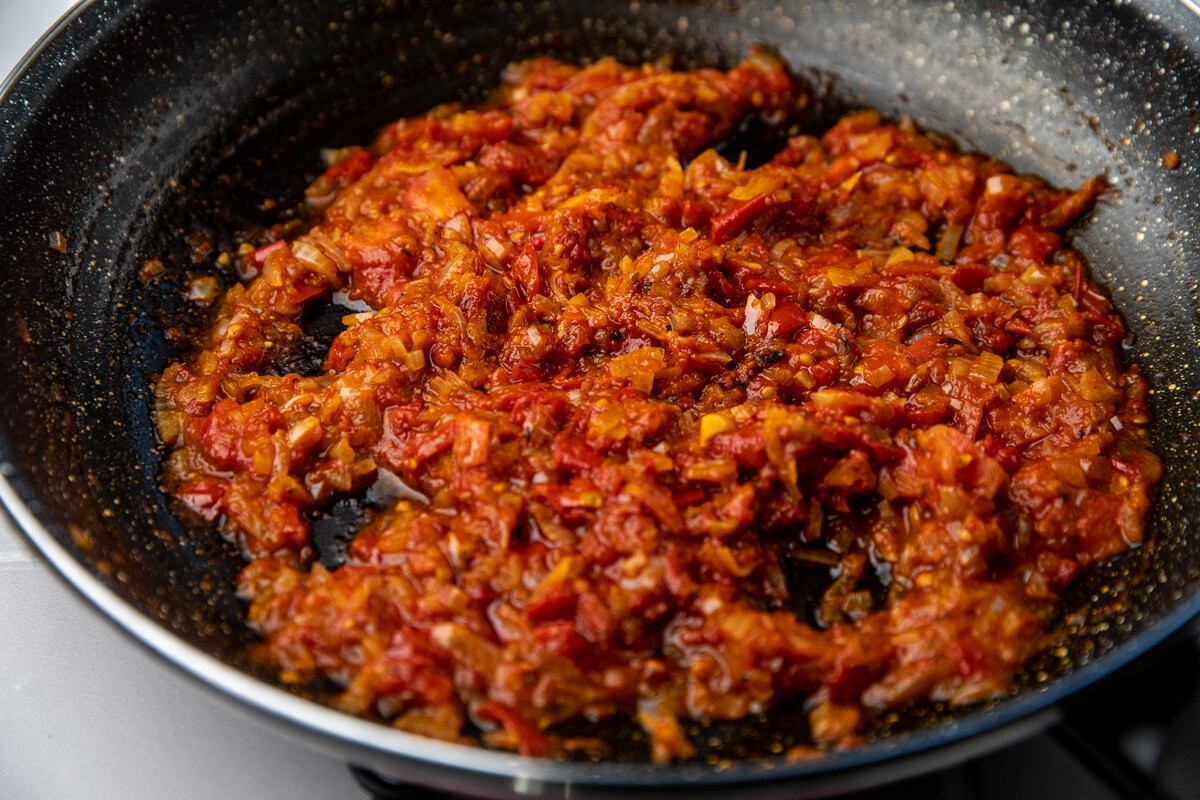
5. Chop the second onion, garlic and herbs.
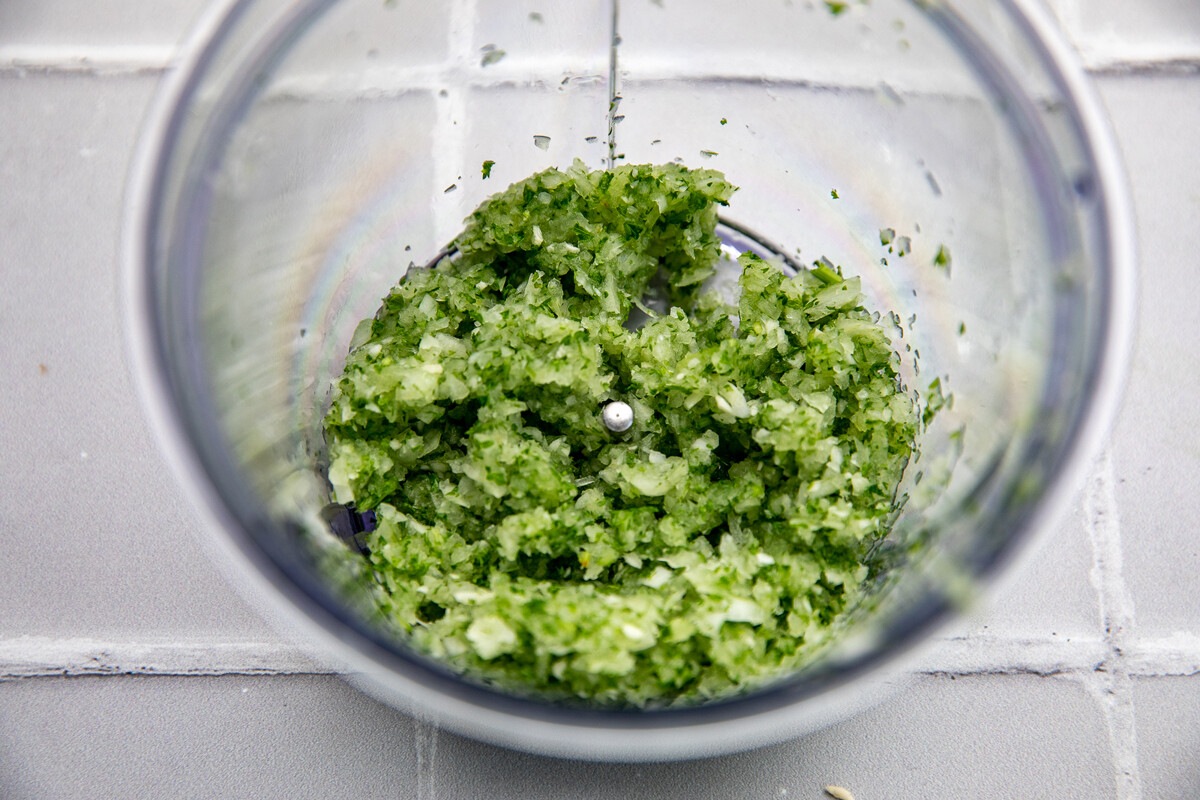
6. Mix the minced meat, tomato paste, finely chopped fresh onion, squeezed garlic and chopped herbs in a deep bowl.
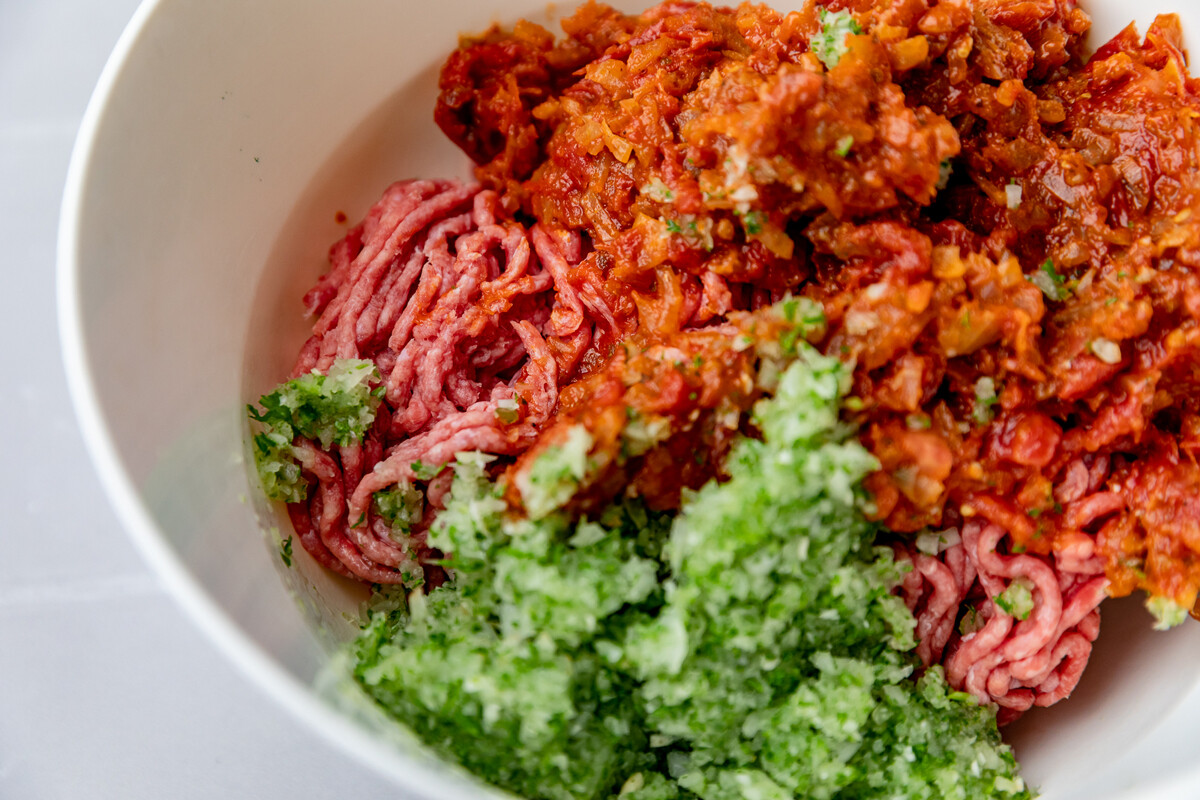
7. Mix thoroughly, adding water, which will soak into the meat and then provide the broth inside the kurze. I stir the minced meat with my gloved hands.
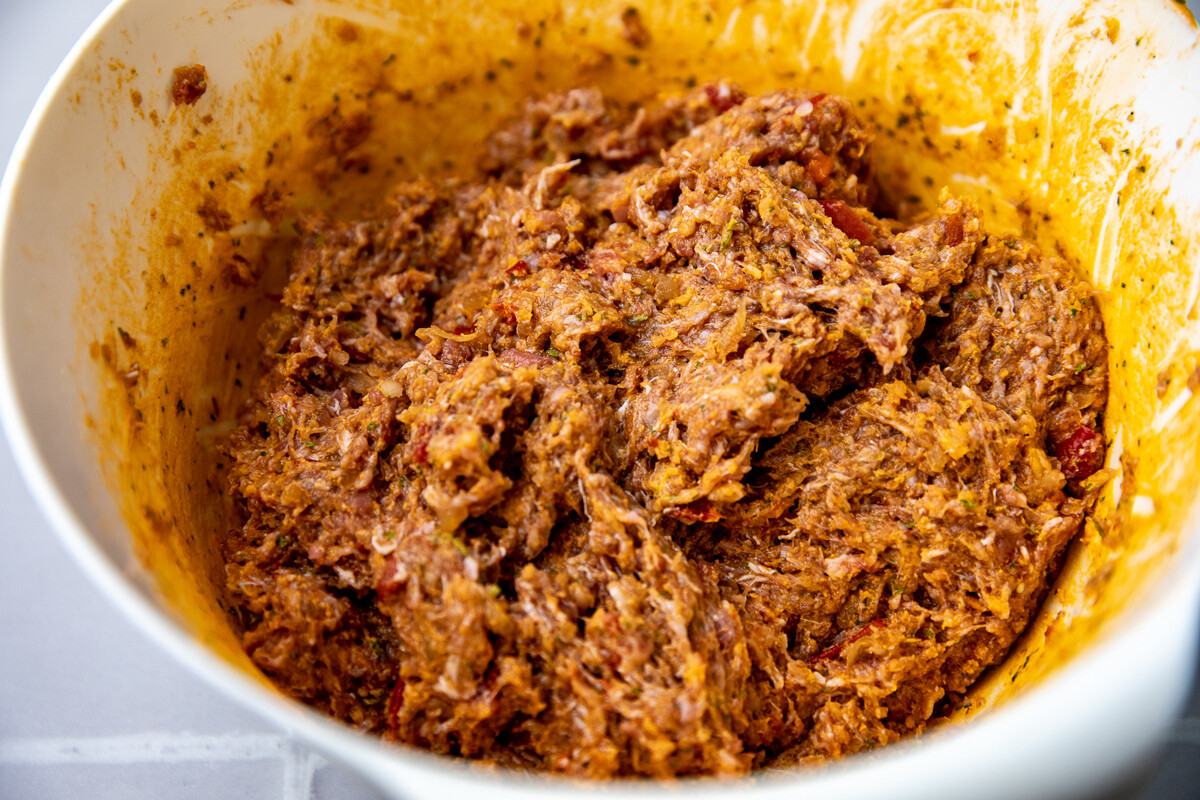
8. Divide the dough into 4 equal parts. While working with one piece of dough, put the rest in a bag to keep it from drying out.
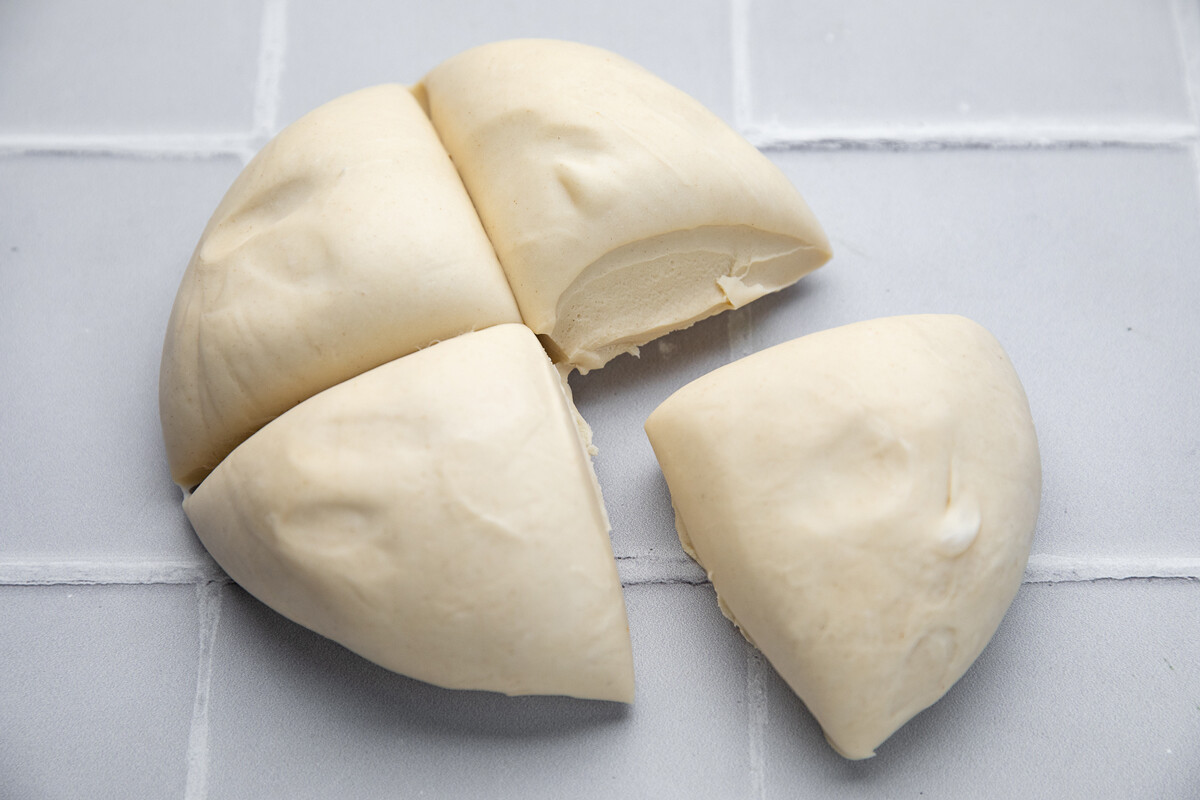
9. Roll out a sheet of dough not too thin so the filling won’t tear it. Cut out circles with a diameter of 6-8 cm. Cover the cut out circles of dough while you mold the others.
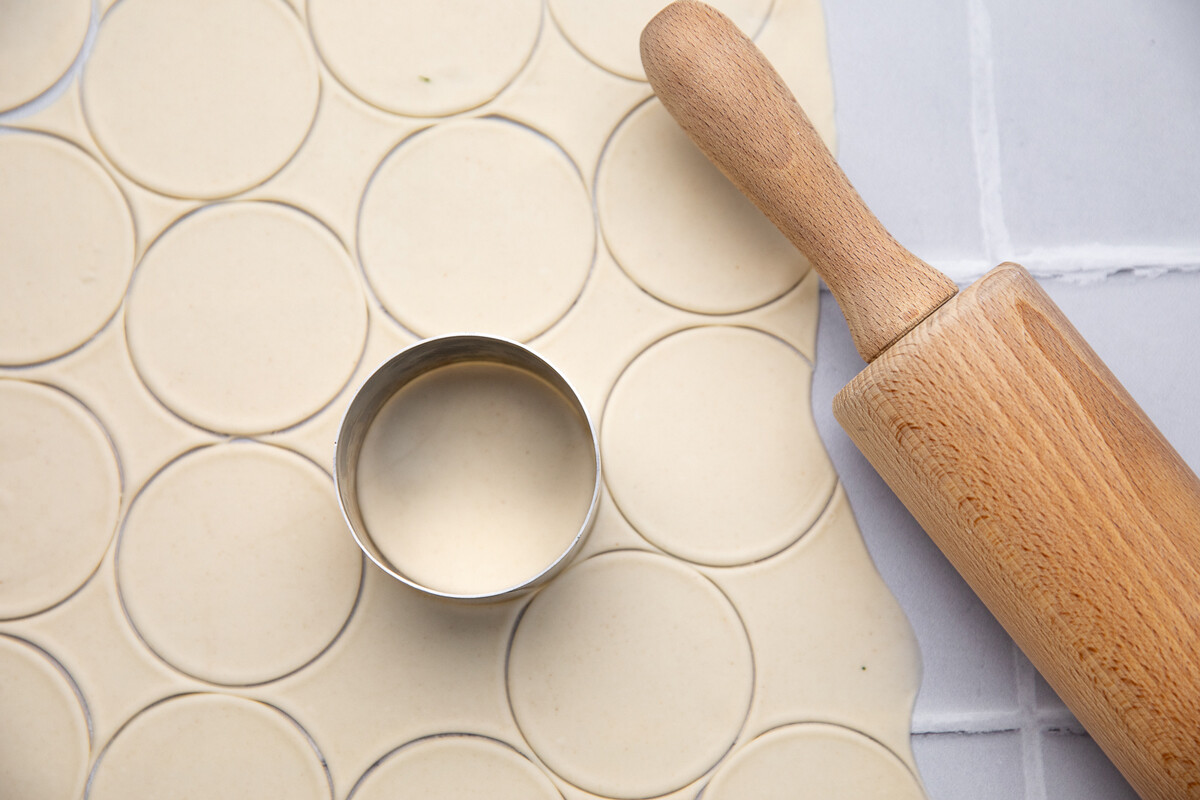
10. Put a teaspoon of filling in the middle. Push up one edge so that the other edge of the kurze stays rounded. Start folding the edges of the dough on both sides one by one, covering the filling. The other end stays sharp. One fourth of the dough will make about 22 kurze each 6 cm, or 12 kurze each 8 cm.
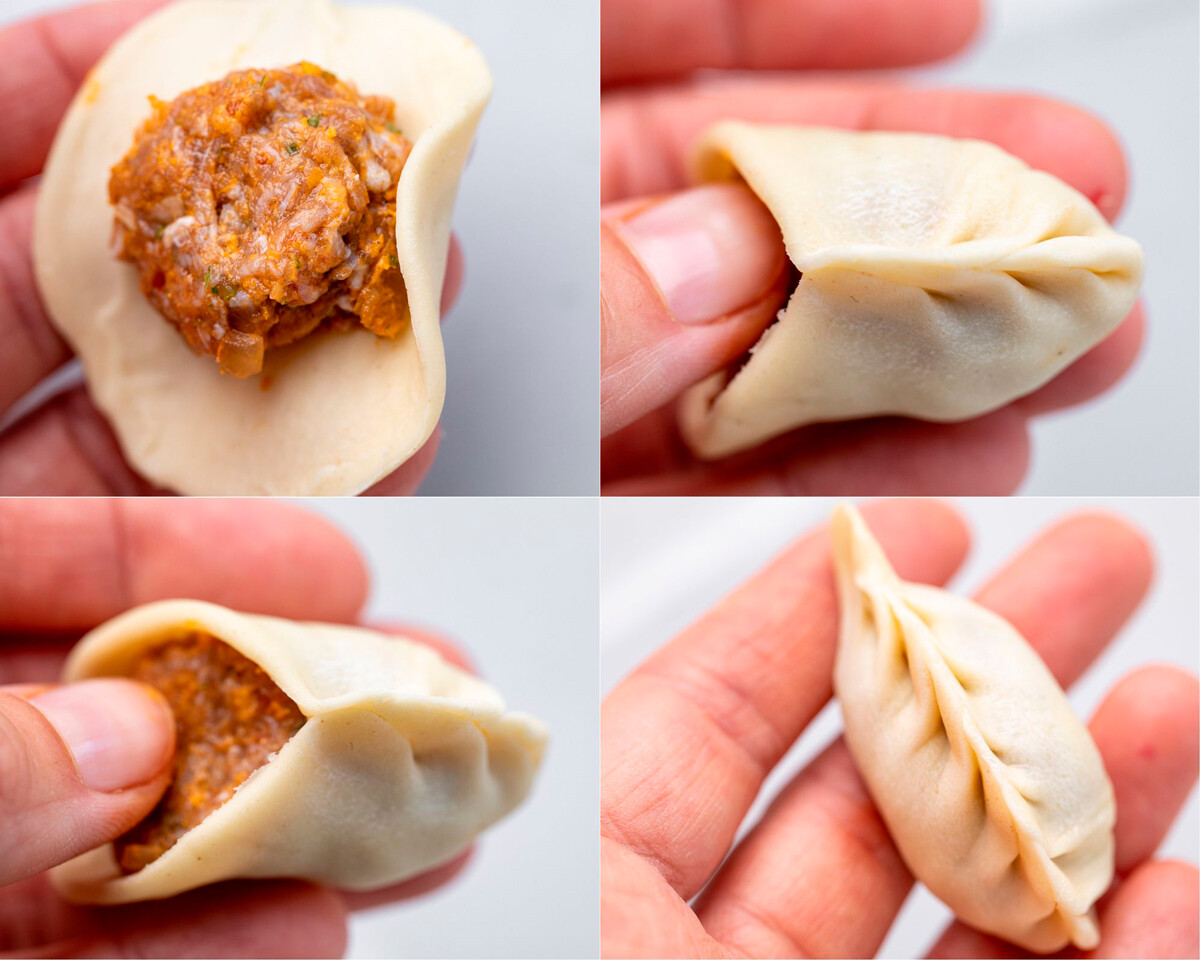
11. I put the finished kurze out on a smooth surface, lightly dusted with flour. Cook your kurze in boiling water for about 7 minutes.

12. Serve hot with yoghurt and herbs. Enjoy!
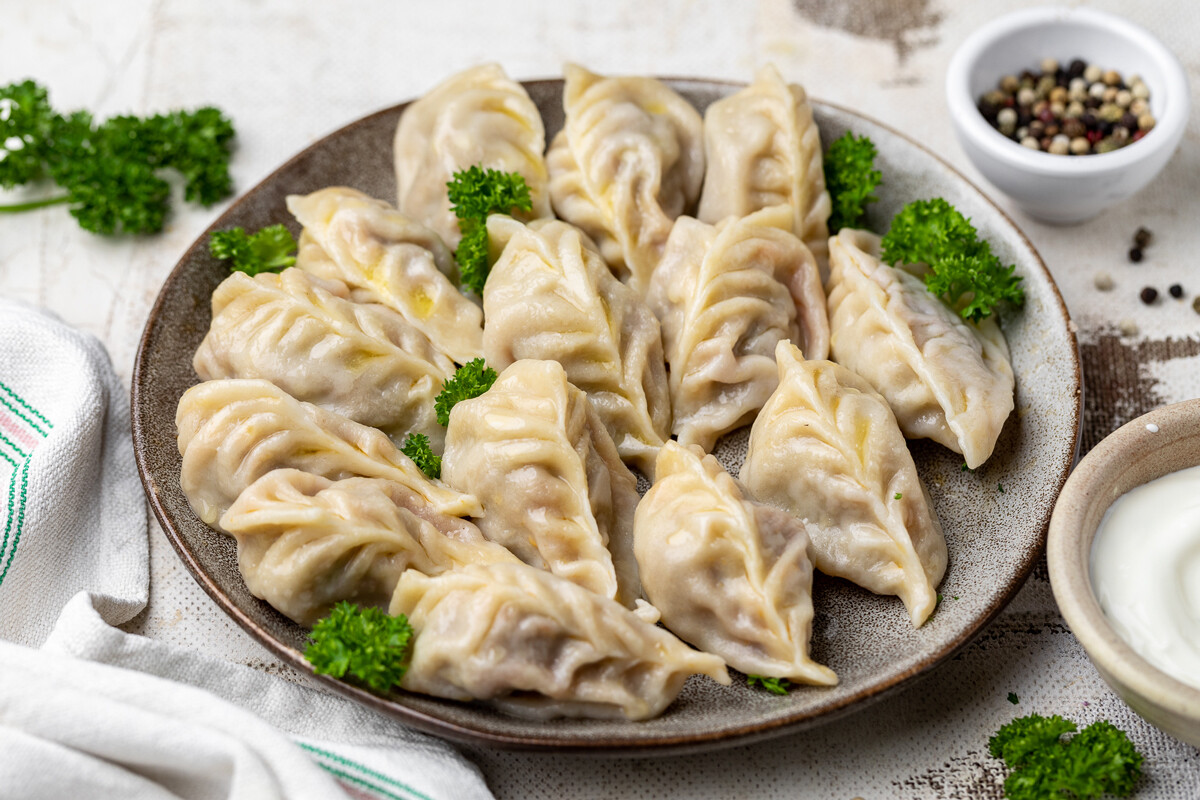
Dear readers,
Our website and social media accounts are under threat of being restricted or banned, due to the current circumstances. So, to keep up with our latest content, simply do the following:
If using any of Russia Beyond's content, partly or in full, always provide an active hyperlink to the original material.
Subscribe
to our newsletter!
Get the week's best stories straight to your inbox